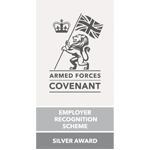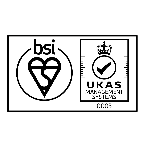
Safety is written in the scheme
Bernie Winter of LEEA Technical Services takes a broader look at guidance on written schemes.
In a recent article I looked at the common misconception that written schemes can be drawn up as and when it is convenient to do so – which, in short, is not the case. Given the popularity of ‘Guidance on Written Schemes of Examination for Lifting Equipment – Document reference: LEEA 032; Dated July 2023 Version 2.1, as a download, it is worth taking a broader look at the guidance this document offers.
This was a significant development given there was no history of examination schemes for lifting equipment prior to The Lifting Operations and Lifting Equipment Regulations 1998 (LOLER), other than those schemes for pressure equipment which served as useful guidance. LOLER permits a scheme of examination, drawn up by a competent person, as an alternative to the fixed maximum periods.
The big benefit of having a scheme that focuses on the most safety critical areas is that it leads to examinations that can enhance safety, in addition to being conducted cost-effectively. However, a written scheme of examination is only appropriate when its advantages outweigh the disadvantages.
There are a number of instances where this may be the case, the first being when the condition of the equipment depends primarily on the amount and/or nature of the usage and such usage can be monitored. For example, if the equipment can be fitted with a time recorder, which records the hours of service, or if the tonnage lifted and moved can be calculated from production records.
Other circumstances might include when various parts of the equipment deteriorate at markedly different rates, or when equipment is only used occasionally and can be adequately quarantined and examined when required for used.
Conversely a periodic examination is more likely to be appropriate when the amount of use cannot easily or cost effectively be monitored; or when the equipment may deteriorate due to time and/or storage conditions whether used or not, such as with natural fibre ropes.
A written scheme may also be appropriate when equipment is vulnerable to damage each time it is used and the thorough examination is in effect a ‘long stop’ to detect any deterioration not noticed during the in-service inspection – a webbing sling for example, or when the use pattern is well established and all parts subject to a similar rate of deterioration.
The previous article also mentioned another common misconception – that a written scheme can be used for lifting accessories. Let’s dig into this a little deeper because while in theory it is possible to consider a written scheme of examination for lifting accessories, in practice it is not achievable or correct for most cases.
Many schemes encountered by LEEA have been set up with expense and availability of a Competent Examiner in mind. This is wholly unacceptable and could be considered as putting profit before safety. If a company wishes to produce written schemes for accessories, they may do so, but they must be able to provide robust evidence in support of why the written scheme of examination does not compromise safety and why they believe it is suitable in each particular case.
The problem with trying to apply a written scheme of examination to lifting accessories is that their use is difficult to control and accessories can suffer damage when not being used as easily as when in use. In fact most damages to lifting accessories actually occur during transit and improper storage. Damage is usually in the form of nicks, cuts and gouges. While these kind of minor defects will often be considered insignificant when a user carries out pre-use inspection, a competent inspector or examiner will see such defects as possibly being a starting point of more severe cyclic damage. As such, 6 months is the accepted long stop between inspections.
For further information, download ‘Guidance on Written Schemes of Examination for Lifting Equipment – Document reference: LEEA 032; Dated July 2023 Version 2.1, at leeaint.com or email technicaladvice@leeaint.com.



